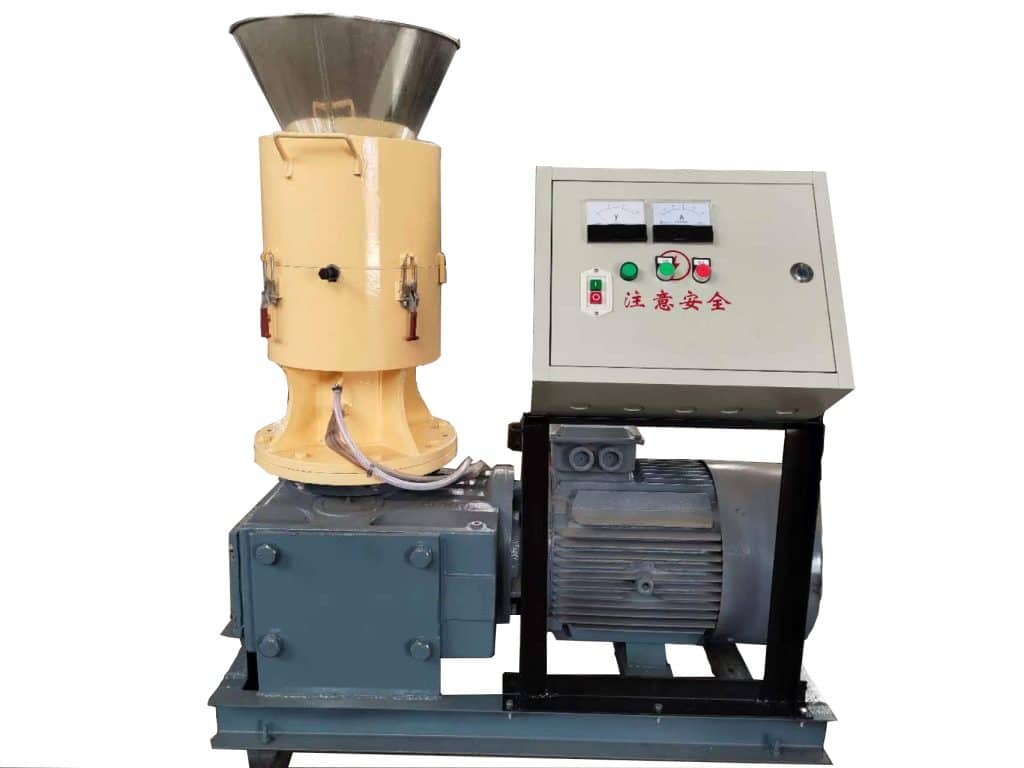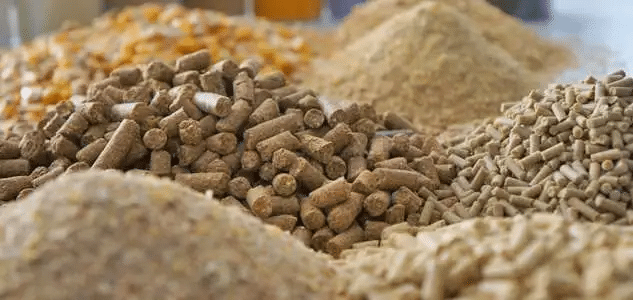
A wood pellet production line is a facility that processes wood or biomass materials into compressed wood pellets. Wood pellets are small, cylindrical-shaped pellets made from compressed sawdust, wood shavings, wood chips, or other biomass materials. They are commonly used as a renewable and sustainable fuel source for heating and power generation.
Pellet Production Line Process
Wood pellet production lines typically consist of several stages and components, that work together to efficiently produce high-quality wood pellets. The image below is a pictorial representation of the main production steps:

1. Raw Material Collection
The first step is to prepare raw materials. The plant collects raw materials such as sawdust, wood chips, or other types of biomass. These materials may be sourced from forestry operations, sawmills, or other wood processing industries.

2. Size Reduction
After preparing the raw materials, the next step is the preliminary processing of the raw materials. The raw materials are often too large to be directly used for pelletizing. Hence, they are first processed through equipment like hammer mills or chippers to reduce their size into smaller particles.



3. Drying
The crushed raw materials contain too much moisture and are not suitable for processing into pellets. The moisture content of the raw materials needs to be reduced to a specific level to ensure the quality and efficiency of the pellets. Drying is typically achieved using rotary drum dryers or other drying systems.

4. Pelletizing
The dried raw materials have reached the usage standards and can now be fed into the pellet machine to produce pellets. Inside the pellet mill, the material is compressed through die-holes under high pressure. The heat generated during this process softens the lignin in the wood, acting as a binding agent that holds the pellet together.


Generally, There are two main types of pellet mills:
- Flat Die Pellet Mill
- Ring Die Pellet Mill


5. Cooling
The freshly produced wood pellets come out of the pellet mill at a high temperature and moisture level. They need to be cooled down to room temperature and have their moisture content reduced to a suitable level to prevent deterioration during storage. Freshly produced pellets are usually put into pellets cooler to speed up cooling.


6. Screening and Quality Control
The cooled pellets are usually passed through a vibrating screen to separate any fines or oversized particles. Quality control measures are taken to ensure that the pellets meet specific size, density, and moisture content standards.

7. Packaging and Storage
The final wood pellets are then packed in bags or stored in bulk for distribution and use. They can be transported and sold to residential, commercial, or industrial users as renewable energy sources for heating or power generation.

How to improve the production efficiency of wood pellet machine
- If the actual output is 1-2 tons, choose equipment that suits your production capacity and choose a machine that produces 2-3 tons. Wouldn’t it be a waste of less material?
- During production, the feed should be ensured evenly, the machine should run smoothly, and the granulation should be even without blocking the material.
- Control the gap between the mold and the pressing wheel. After the material is matured at high temperature, it is stamped and formed by the pressing wheel. The particles produced in this way have a good density and are strong and beautiful.
- Choose the appropriate mold aperture according to your actual needs. Small aperture will cause low output and material discharge, and also seriously affect the production efficiency of the wood pellet machine.
- Regular oil lubrication and cleaning. Long-term friction between the mold and the pressure wheel will damage the mold. Regular oiling and cleaning can not only ensure the cleanliness of the mold, but also reduce the friction between the two, reduce costs, and improve productivity.
What issues need to be paid attention to when building a biomass pellet plant?
environmental protection issue
Nowadays, opening a factory requires environmental impact assessment and security before it can be carried out. Therefore, before establishing a biomass pellet factory, we must first solve the environmental protection issues, deal with dust from the equipment, reduce the noise of the equipment, and ensure the safety of the equipment!

raw materials
The efficiency of a biomass pellet plant largely depends on the raw materials. If there are many raw materials and their collection is simple and cheap, then this place is suitable for building a factory. Secondly, the type of raw material determines your production line process.
If your raw material is dry shavings from a lumber factory, this material can be directly used for granulation; if your raw material is large, high-moisture wood such as logs, The materials need to be crushed, pulverized, dried and then granulated. In this case, the production cost will also increase significantly.
Therefore, biomass pellet production lines cannot be purchased casually. This requires individual design and planning based on one’s own situation and needs. The production line plan that suits one’s own needs is the least likely to cause problems in later use.
equipment issues
Because biomass raw materials are relatively complex, choosing poor-quality equipment will affect production operations. The production line involves many types of equipment.
Choosing a large-scale equipment manufacturer with a good reputation and guaranteed after-sales will be conducive to later maintenance and upkeep.
Compared with equipment from smaller companies, equipment from big brands may not have an advantage in terms of price, but their products have been recognized by the market, so there is no need to worry too much about quality and after-sales.
Advantages of pellets production line

High efficiency and energy-saving
The bio-pellet production line adopts advanced separation and extraction technology, which can efficiently extract the target biological substances, reducing energy waste and material waste during the production process, thereby improving production efficiency and reducing production costs.
Intelligent
The bio-pellet production line is equipped with an intelligent control system, which can realize automated production, reduce manual intervention, and improve production efficiency and product quality.
Precise separation
The biological particle production line adopts efficient separation technology, which can separate biological particles of different sizes and shapes, thus improving the purity and quality of the product.
Wide scope of application
The biological particle production line can be used in biological drugs, food, cosmetics and other fields, and can produce high-quality biological products to meet people’s growing health needs.
wood pellet production line for sale
lemon pellet production line is advanced equipment dedicated to producing high-quality biomass pellets.


Our biomass pellet production line features high automation, low energy consumption, and large production capacity. It also complies with environmental standards, significantly reducing emissions and pollutants during the production process.
Through this production line, we can provide customers with stable and reliable biomass pellet products while contributing to environmental conservation efforts.
